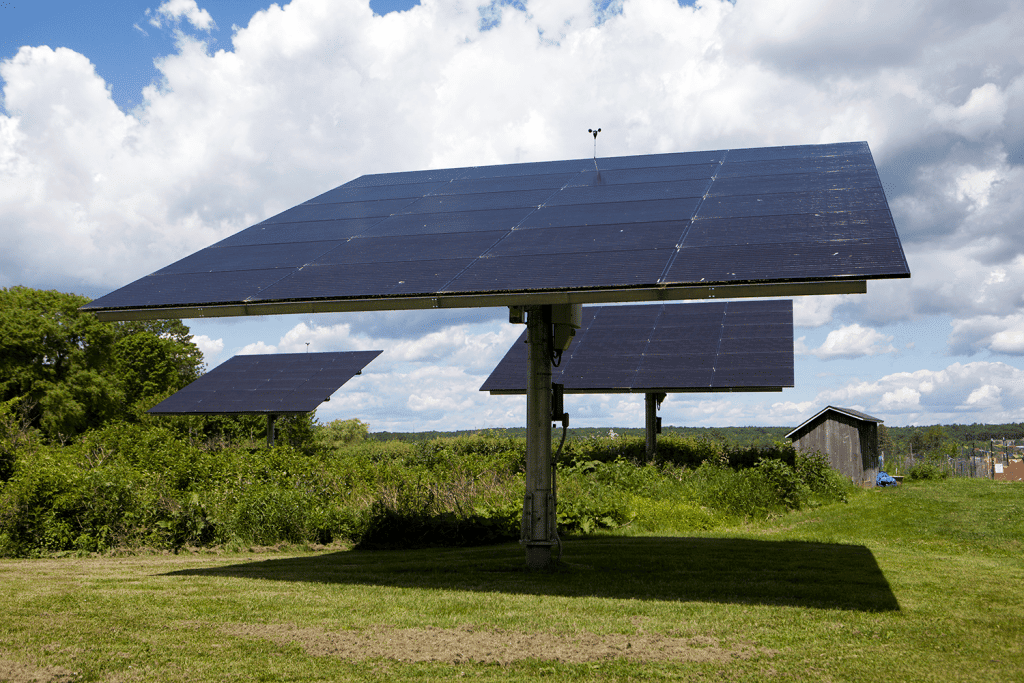
We turn the clocks back this weekend, so we can’t deny it any longer: winter really is coming. Last November, we had 16 inches of snow in the Portland area! With these shorter days and colder temperatures, our thoughts inevitably turn to keeping warm.
But those thoughts clash with news inundating my inbox. A new climate report from National Audubon finds that two-thirds of North American birds are at increasing risk of extinction from global temperature rise. This and other news makes me think twice about energy use, especially the use of fossil fuel. And of course I’m not the only one thinking about that: Maine’s lawmakers have set some ambitious goals for reducing our greenhouse gas emissions, by at least 45% below the 1990 annual emissions level by 2030, and by 80% below the same level by 2050.
Making our homes and buildings energy efficient is one way we can work toward this goal. Turning to renewable energy is another. Maine is also committed to procuring 80% of retail electricity sales from renewable energy sources by 2030 and 100% by 2050.
All this legislation is spurring interest and investment in renewable energy projects across the state. In anticipation of this, Maine Audubon’s scientists have been working hard over the past year, studying current literature, talking to experts in the field, reviewing policies in neighboring states, and conducting a GIS analysis on the intersection of high-value wildlife resources and wind resources.
The culmination of this work, a comprehensive report titled Renewable Energy and Wildlife in Maine, will be released on November 7, when you’ll be able to find both the executive summary and the full 112-page report online at www.maineaudubon1.wpengine.com/energy. The report describes the vulnerability of Maine’s wildlife and habitats to climate change driven by fossil fuel emissions and advocates for swiftly, but thoughtfully, replacing fossil fuels used to generate electricity with renewable energy sources.
The report, written by Sarah Haggerty, Conservation Biologist and GIS Manager, and Sally Stockwell, Director of Conservation, includes a look at the potential impacts of solar, onshore and offshore wind, and transmission line facilities on wildlife and habitat. We give detailed policy considerations and recommendations on ways to site, construct, and operate projects with wildlife in mind. Based on our research, we believe that Maine can thoughtfully develop projects that avoid, minimize, or compensate for wildlife and habitat impacts and achieve our renewable energy goals.
A few highlights: We strongly encourage solar in built and disturbed environments, which has the fewest impacts on wildlife and habitat. We urge Maine and other states to work cooperatively and engage in long-term planning to reduce the prevalence of transmission lines, which fragment and otherwise impact wildlife and habitat. And where impacts are unavoidable, compensation must reflect harm to all impacted species and habitats.
We’ll be talking about these recommendations with stakeholders, and in our roles on subcommittees of the Maine Climate Council. You can help, too. Share this report with your local planning board, town planner, or other municipal officials so that they can plan how they will balance renewable energy development with natural resource protection in your town. Consider installing solar panels at your home or business, and explore ways to make your house more energy-efficient. Let’s bundle up–we’ll only get there if we all go together!
In the meantime, I hope to see you at one of our many events this month. If you’re in the Falmouth area over the Thanksgiving holidays, be sure to stop by for our Handcrafted Holiday Bazaar on Nov. 30. More info: maineaudubon1.wpengine.com/events/
